Look at the figure given below. It is a section of the human kidney as seen from the front.
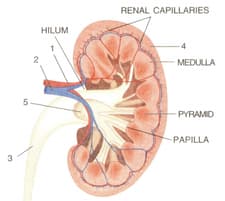
Which area/part (give its name or the number given on the diagram) contains the following:
Malpighian capsule


Important Questions on The Excretory System
Look at the figure given below. It is a section of the human kidney as seen from the front.
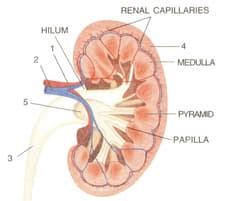
Which area/part (give its name or the number given on the diagram) contains the following respectively:
The blood vessel with least/no nitrogenous waste.
Look at the figure given below. It is a section of the human kidney as seen from the front.
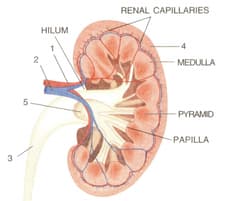
Which area/part (give its name or the number given on the diagram) contains the following:
Freshly collected urine
Given alongside is the figure of certain organs and associated parts in the human body. Study the same and answer the questions that follow:
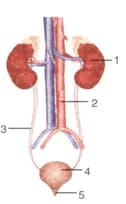
Name all the organ systems shown completely or even partially.
Given alongside is the figure of certain organs and associated parts in the human body. Study the same and answer the questions that follow:
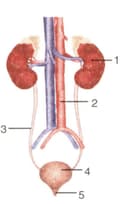
Name the parts numbered 1 to 5.
Given alongside is the figure of certain organs and associated parts in the human body. Study the same and answer the questions that follow:
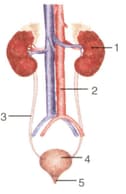
Name the structural and functional unit of the part marked '1'.
Given alongside is the figure of certain organs and associated parts in the human body. Study the same and answer the questions that follow:
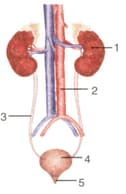
Name the two main organic constituents of the fluid that flows down the part labelled '3'.
Given alongside is the figure of certain organs and associated parts in the human body. Study the same and answer the questions that follow:
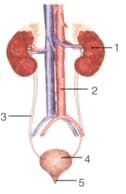
Name the two major steps involved in the formation of the fluid that passes down the part labelled '3'.
The following diagram represents a mammalian kidney tubule (nephron) and its blood supply. 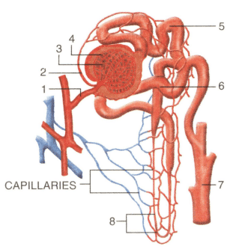
Parts indicated by the guidelines 1 to 8 are as follows :
1. Afferent arteriole from the renal artery;
2. Efferent arteriole
3. Bowman's capsule,
4. Glomerulus;
5. Proximal convoluted tubule with blood capillaries;
6. Distal convoluted tubule with blood capillaries;
7. Collecting tubule;
8. U - shaped loop of Henle.
Study the diagram and answer the questions that follow:
Where does ultrafiltration take place?
